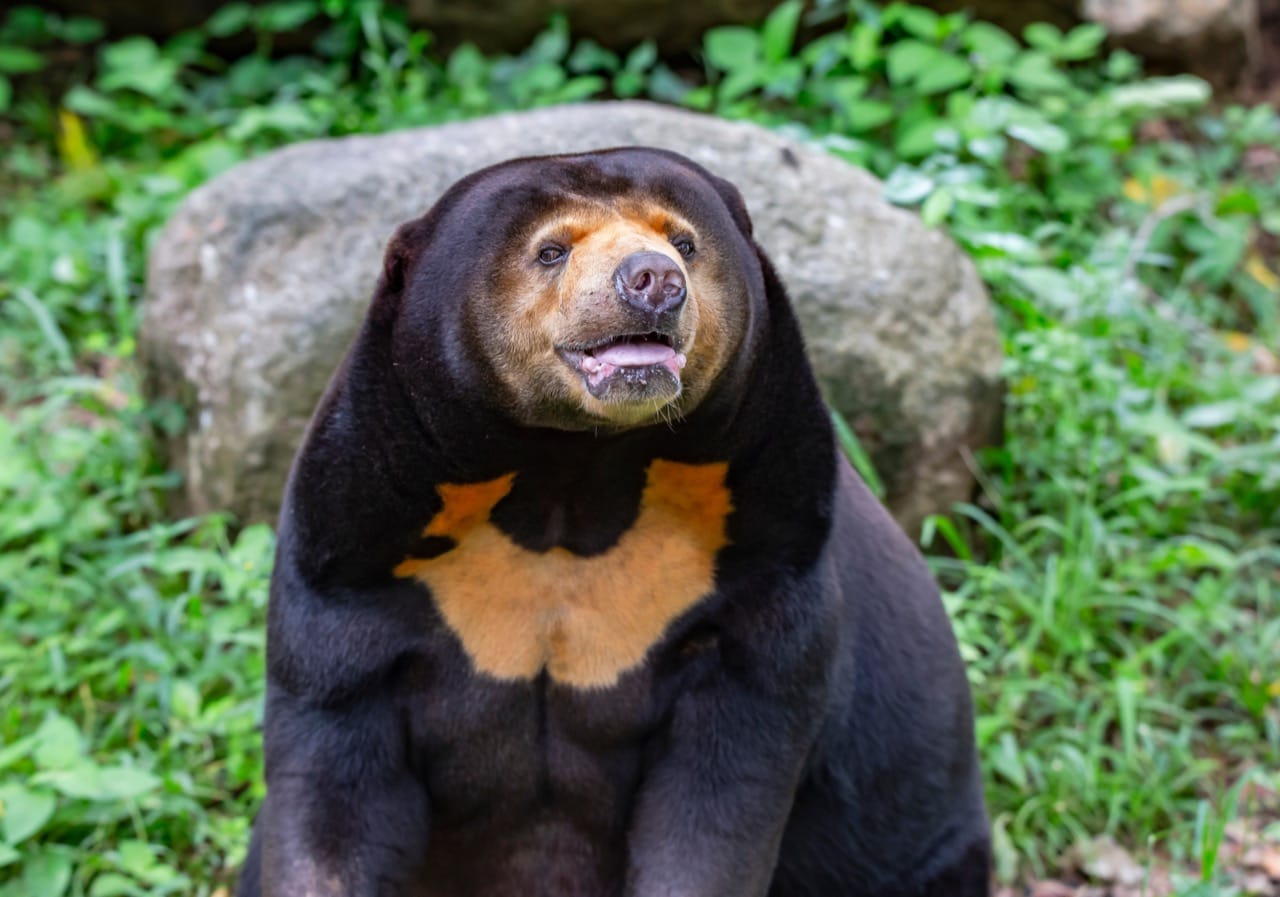Imagine a bear that can almost disappear beneath the leafy canopies of Southeast Asia’s tropical forests. The sun bear, with its sleek, black coat and a distinct, golden crescent on its chest, is a creature of both beauty and mystery. Often overlooked compared to its larger relatives, the sun bear holds the title of the smallest member of the bear family. This unique bear’s size, behavior, and habitat preferences offer a fascinating glimpse into the adaptability and diversity of bear species around the world.
Characteristics / Physical Description
The sun bear (Helarctos malayanus) stands out with its short, sleek black fur, which helps it remain inconspicuous in its dense forest environment. Adults typically weigh between 25 to 65 kilograms and measure around 120 to 150 centimeters in length, making them significantly smaller than other bears. One of the most striking features of the sun bear is the golden or white crescent marking on its chest, which varies between individuals and is thought to be unique like human fingerprints. Their face is lighter in color, and they possess extremely strong jaws capable of cracking open nuts and tearing apart logs.
Taxonomy and Classification
The sun bear belongs to the family Ursidae, which includes all bear species. Within this family, the sun bear is classified under the genus Helarctos. It is the sole member of this genus, highlighting its distinct evolutionary path. The scientific name of the sun bear, Helarctos malayanus, reflects its geographical ties to the Malay Peninsula, though its range extends beyond Malaysia.
Behavior and Social Structure
Sun bears are primarily solitary animals, with males and females generally coming together only to mate. They are highly territorial and communicate through scent markings, vocalizations, and tree scratching. These bears are also predominantly nocturnal, especially in areas where they are likely to encounter humans. Incredibly agile climbers, sun bears often construct sleeping platforms high in the trees to rest during the day.
Habitat and Distribution
The natural habitat of the sun bear spans across the tropical forests of Southeast Asia, including countries such as Malaysia, Indonesia, Thailand, and Vietnam. They are primarily found in lowland forests but can also inhabit mountainous regions. Unfortunately, their populations are dwindling due to habitat loss and deforestation.
Diet and Feeding Habits
Sun bears are omnivorous, with a diet that includes fruits, berries, roots, insects, small vertebrates, and sometimes honey. They are exceptional climbers, which allows them to forage for fruits and break open tree trunks to access insects or honeycombs. Their long tongues, which can extend up to 25 centimeters, are perfect for extracting honey and insects from deep crevices.
Breeding and Reproduction
The reproductive habits of sun bears are not well-documented, but it is known that they can reproduce year-round. Females give birth to one or two cubs after a gestation period of about 95 days. Cubs are born blind and hairless, remaining dependent on their mothers for up to two years, which is a relatively long maternal investment period for such a small bear species.
Relationship with Humans
Sun bears have a conflicted relationship with humans. They are often hunted for their bile and other body parts used in traditional medicine, and their habitats are increasingly being encroached upon by human activities. However, they also play a role in the ecotourism and conservation efforts within their range, helping to raise awareness and funds for tropical forest conservation.
Evolutionary History
The sun bear’s evolutionary history is not thoroughly understood, but it is believed to have diverged from other bear species several million years ago. Its small size and arboreal habits are considered adaptations to the dense forest environments of Southeast Asia, allowing it to exploit ecological niches unavailable to larger, ground-dwelling bears.
Use as Research Animals
While not commonly used as research animals in the traditional sense, sun bears are often subjects of study in behavioral and ecological research. Studies typically focus on their diet, habitat use, and the impacts of human activity on their populations, contributing valuable data towards conservation strategies.

